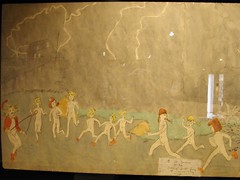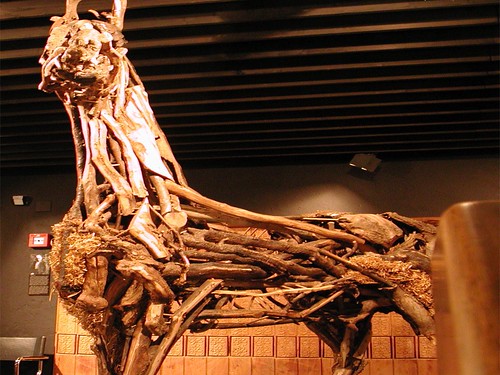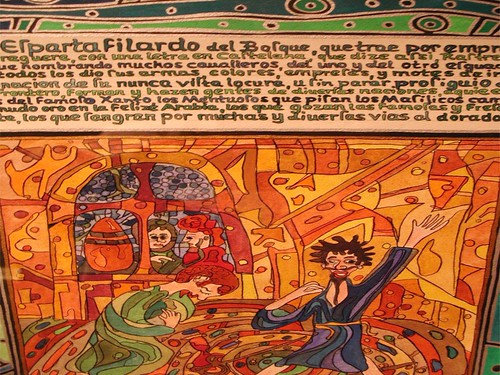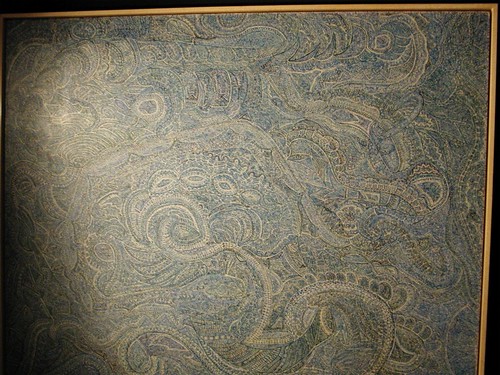Last night I had the pleasure of going to Nerd Nite SF at the Rickshaw Stop, courtesy of my friend Laura. Nerd Nite is a regular series of spirited talks given by geeky people in bars in 50 cities around the United States. I'm not sure why it has taken me this long to make it to one of these, but I think I'm going to be a regular.
Last night there there were three talks on a wide range of nerdy topics:
- “The Slow Death of the Muse: A History of Schizophrenia & Hearing Voices” by Patrick House
- “Breaking the Blood Bank: The Path Toward Universal Blood” by Ahnika Kline
- “Combined Sewerage: Where the **** Hits the Fan” by ???
I enjoyed all the talks, which were funny, clever, edgy and very very nerdy. And the crowd was a friendly mix of people there to get their minds blown and their drink on. We chatted amiably with the people around us during the talk breaks.
Beyond the actual topics, it was refreshing to be at an event in late December that really had nothing to do with the holidays at all.
The talk by Patrick House on schizophrenia reminded me of a visit to one of the most profound museums I've ever visited, La Collection d'Art Brut in Lausanne Switzerland. This small but well-curated museum explored the uncomfortable gray area between genius and madness.
This wide ranging collection of art displays works by people who have been institutionalized, people who have create art while in trance states or under the effects of hallucinagenic substances, and others on the margins of society. Many of the most beautiful and affecting pieces were only discovered after the person's death, dying without their work being recognized in any way.
 There are as you can imagine many disturbing pieces that you can not unsee. This small illustration I almost walked right by, a seemingly benign depiction of children at play. Until you look closer.
There are as you can imagine many disturbing pieces that you can not unsee. This small illustration I almost walked right by, a seemingly benign depiction of children at play. Until you look closer.
This person, who was institutionalized, was obsessed with making drawings of this sort. It's unclear if he ever did anything more than simply draw these images or had acted on these impulses. But I sincerely hope not.
[NOTE: my friend Michael DeLong informs me that this work is by outsider artist Henry Darger.]
Other pieces were affecting in different ways. I was so in love with this horse sculpture made from driftwood I kept coming back to it.
I also loved these lavish illuminated texts created by this artist / crazy person that must have taken years and years of effort.
Another institutionalized person obsessively drew patterns along the walls and surfaces of his rooms wherever he was. They are so detailed and complex, but also disturbing in their scale.
This reminded me that as a child, I would obsessively draw very tiny mazes on every available piece of paper I could find. A blank page just called to me to be filled, and I couldn't stop until it was done. So I can imagine a bit of what might have compelled this person. Fortunately, I outgrew my obsession, but clearly this person did not.
At the end of my visit to the Collection d'Art Brut, I was left with a lot more questions than answers. What makes one person a celebrated artist or visionary and another a dangerous person who needs to be isolated from society and "treated" for their "disorder"? Often it is simply class and money and context.
It's also clear that sometimes from great suffering beautiful art can result. So when someone gets treated for their "condition," they can not create art anymore. The muse and the madness are connected.
One of Patrick House's main points of his talk on schizophrenia was that we all to some degree hear voices in our heads. The difference is that some of us find comfort and pleasure in them (remembering a favorite saying of a friend, a lover's compliment) and others find torment and judgement (voices insulting you, screaming obscenities at you.) Fortunately, some people can find pathways to channel or purge those voices through acts of creation, medication, therapy or other socially acceptable means. Others never find a way out.


